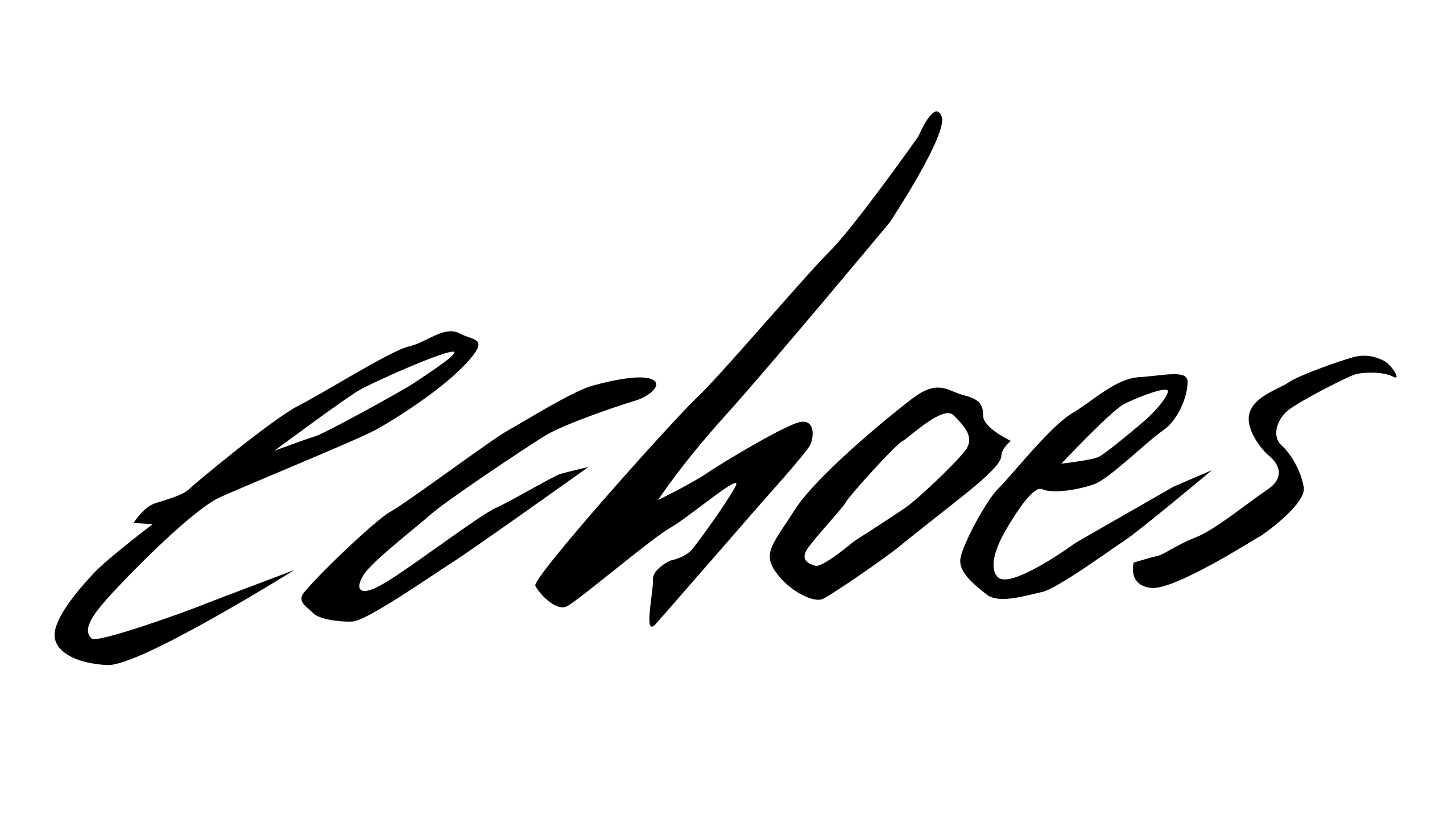Reflections on a Summer of echoes
Madison Miller , 8/23/2025
About Me
Hi there, and welcome to the new echoes blog! My name is Madison Miller, and I’m going into my 4th year at RIT as a Human-Centered Computing major. I spent my summer working on echoes as my CIR experience, and it was honestly so much more fun than I ever imagined it could be.
I came on to the echoes team last fall in 2024 after hearing about the project from my friend, Johnny, who knows Professor Mesh. After applying over the summer and getting a quick response inviting me to join the web team, I began working with a handful of upperclassmen in the Game Design and Development program to develop a brand new website dedicated to the echoes project. I had to rapidly learn a lot of new things, like cool web development frameworks and styling tools (hello, SvelteKit and Tailwind CSS!), as well as wrap my head around how to work better in a team that met only online. In the end, it all worked out!
My “Why?”
As an HCC major, I bring a different perspective to our website design. While having a beautiful website is super important to a brand’s image, a website is only good as long as it is usable by the intended audience. My goal is to make sure that the echoes website displays all the necessary information for students, staff, and community members while also making sure that everyone that visits the website can easily navigate and find whatever they are looking for.
This summer, the goals for my CIR experience were geared mostly towards making the echoes website more user friendly, which includes both the website audience and new team members. In order to accomplish this for our audience members, I worked on making the information on our webpages more easily digestible by splitting it into smaller sections with clear heading hierarchy, or even creating a whole new page with a descriptive title to split the content up a little better. A good example of this is our production page. Originally, all of the team organization content was also crammed onto the production page. Our current deployment has the two split into separate pages: Production and Team Organization. We decided to make this change so that the page wouldn’t be such a long scroll page and to help make the amount of information on the production page less overwhelming to readers. Additionally, I included more interactable elements, such as dropdowns to hide or show information as users scroll through our pages, and cards that users can click on to see additional information. After getting some major updates to the website content finished, I also developed a usability test for the website using the online usability software, Useberry, that I plan to use this semester to get feedback and further improve the website.
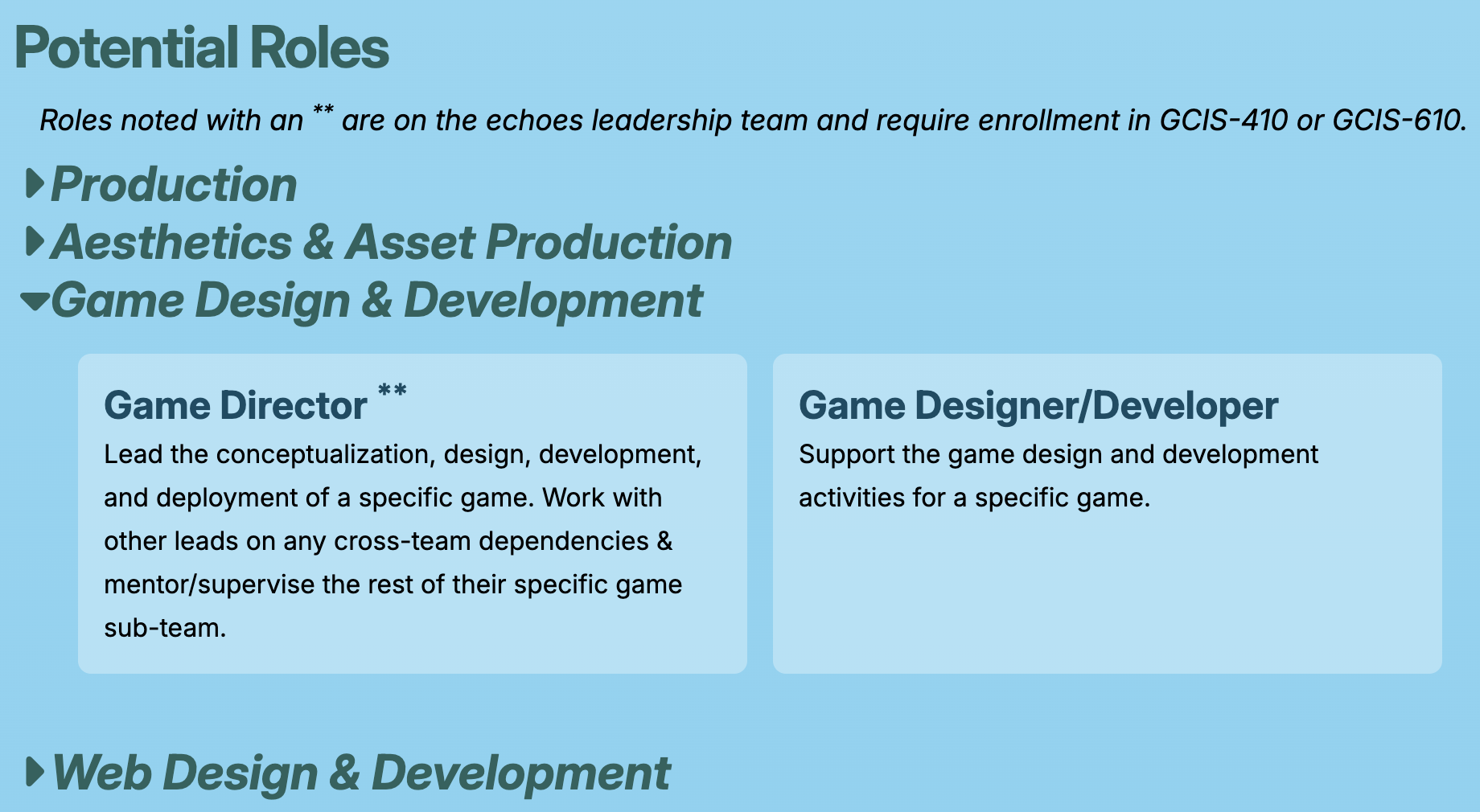
The role dropdown elements on the Production page
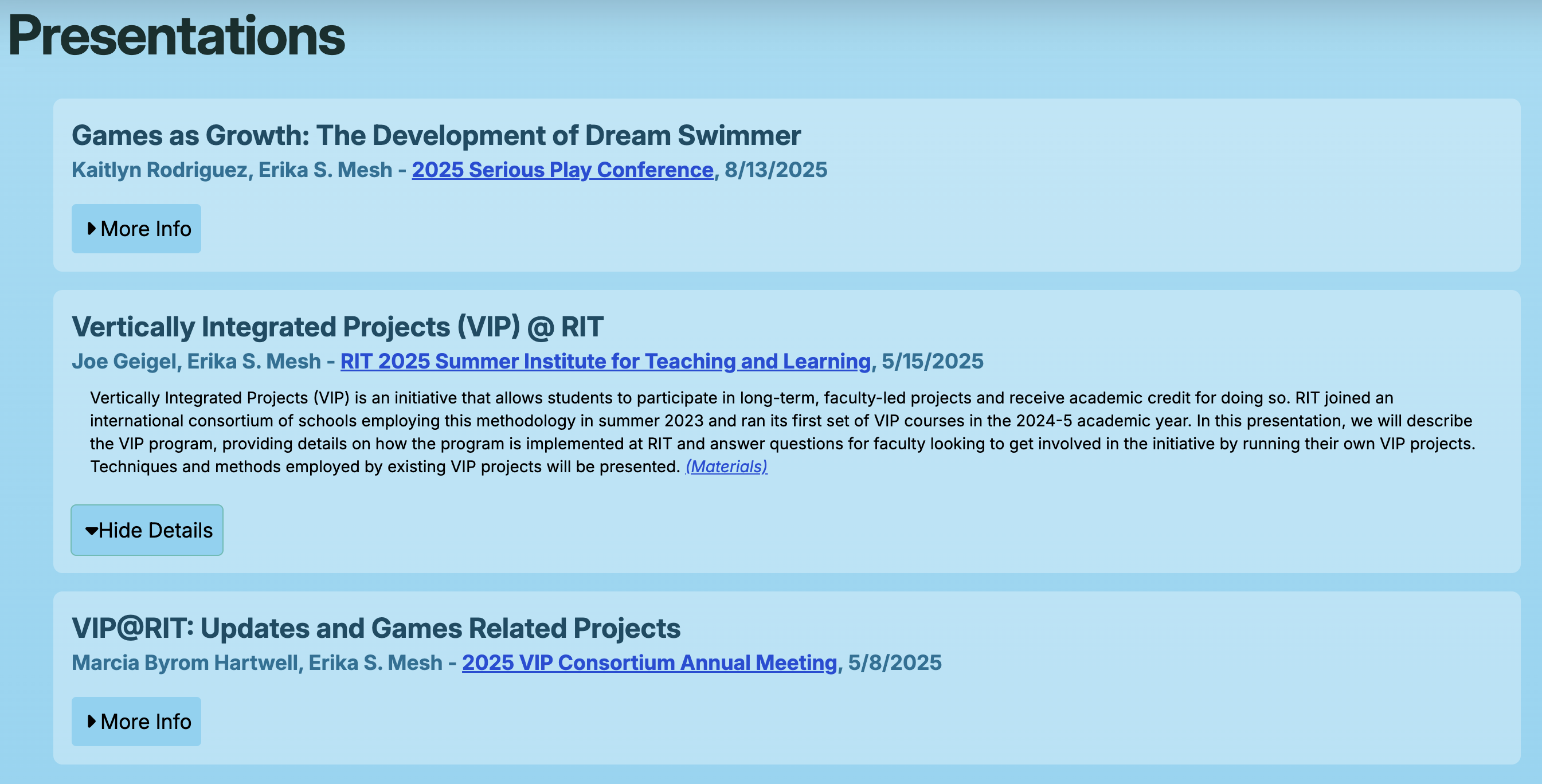
Cards from the Publications page
As for user friendliness geared towards new team members, I did my best to write code that was self-documenting. If it wasn’t so straight-forward, I provided descriptive documentation of new features while also including screenshots with directions for better understanding of key points, such as making updates to our new blog json pipeline. I also created page templates for any pages we anticipate needing to make more of, like the blog post pages. I updated the thematic guidelines for the website to provide more information on what styling is used in certain places on the website, while also making it a little nicer to look at by providing little “paint chips” for each hex code in our branding. No more guessing what each hex code will be when you paste it into the code for styling! If you’d like to get a glimpse at what our thematic guidelines look like, head over to the website info page to read more about the way we to style our website.
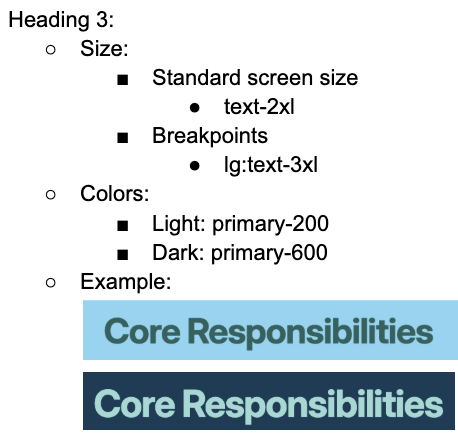
Example headers provided in our theming guidelines

"Paint chips" I added into the theming guidelines for better visualization
Finally, I worked with a new method of organizing my tasks on GitHub, which will serve as the foundation of what the rest of the echoes team will begin using starting in the fall semester this year. I utilized a sprint roadmap and milestone planning for the tasks on the GitHub project board, and I loved it! It was super helpful with keeping track of what I wanted to do and when I wanted to do it, as well as keeping a better eye on deadlines. Overall, I’m excited to see what the rest of the team thinks, as I believe it will be a huge help to everyone once they get the hang of the newer tools we will be using.
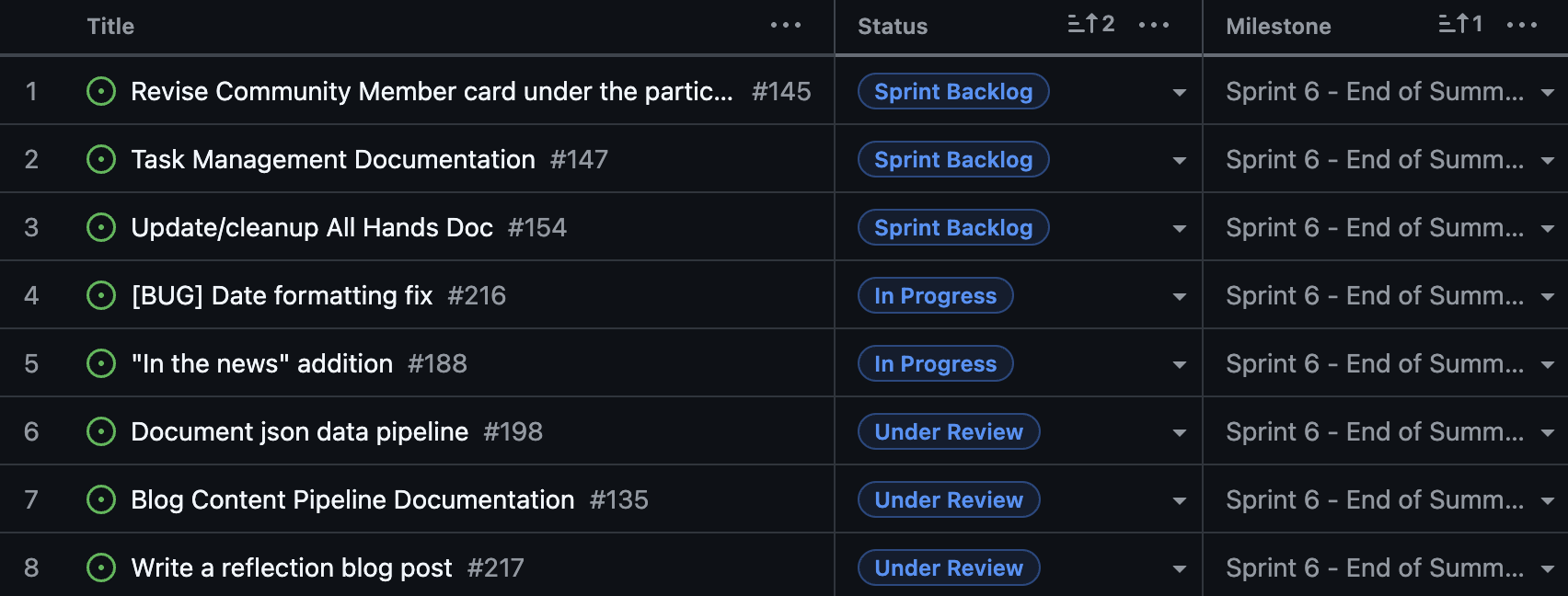
An example of some milestone planning we did for the final sprint of the summer on GitHub
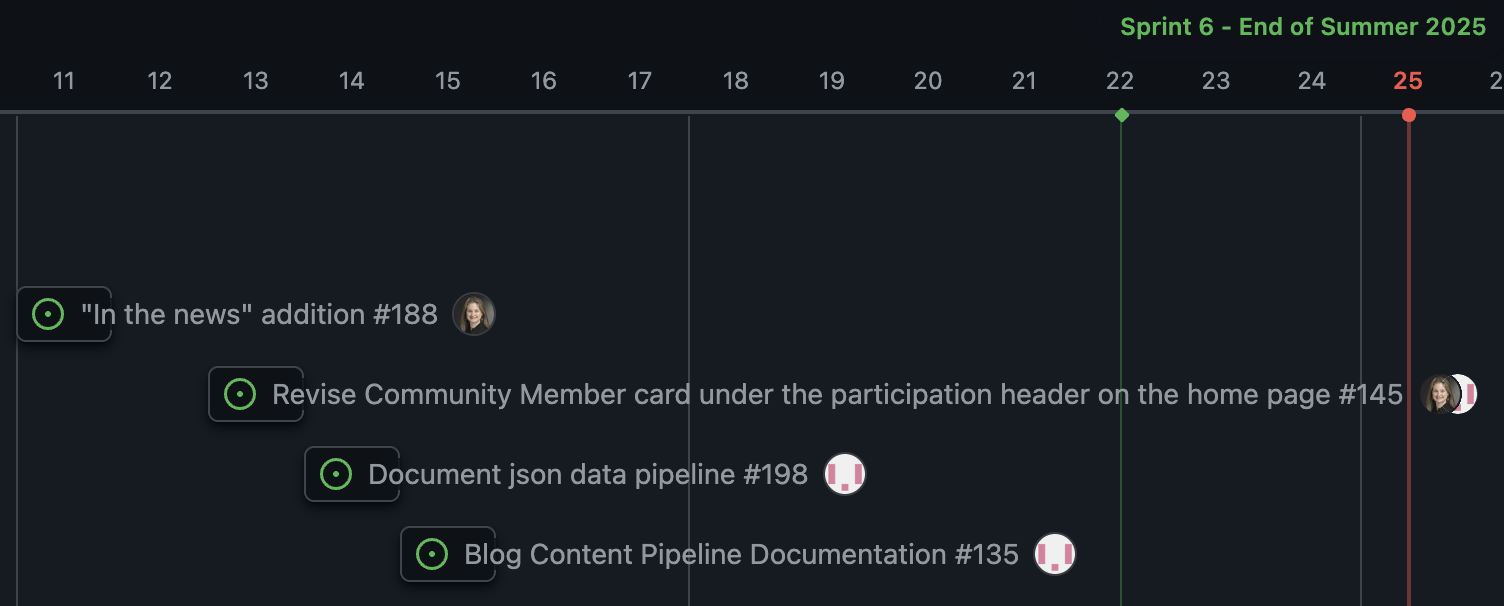
Our sprint roadmap on our GitHub project for the final summer sprint
Words of Advice
Working on echoes this summer was TONS of fun, but that’s not to say it was without a fair share of challenges. Working solo for most of the summer taught me a lot about my own work ethic and how I approach hard tasks. I spent two weeks just doing research on methods of making a blog in Svelte along with a lot of testing and a lot of failure. While it was a necessary step in the process, it was a huge stressor for me and it got to the point where I nearly gave up on the blog entirely. But the blog was the big ticket item we wanted to finish by the end of the summer, so I knew I had to keep going. We ended up switching gears and doing the blog differently, and that is what worked in the end for our needs. There is always a way to do what you want to do, it just might not be the way everyone else tells you to do it. Don’t be afraid to try doing something a different way, because it just might be the way that works for you.
Another thing that is super important is communicating when you have questions or need help. I think that this summer, I was able to get a lot better at that just by having a smaller group of people that I was working with. Ask all of the questions you need to, and it’s okay to ask more if you need clarification. It wasn’t long before I got used to sending a bunch of quick messages and sharing screenshots to get feedback. I previously would have been super nervous about that, but we’re all working towards the same goal on this project, so there’s no need to be worried about feeling silly.
Finally, managing your time well is the key to getting things done on echoes. Because of the unique nature of this project class and the fact that we don’t have a set class time, almost all of the work we do is on our own time. This proved to be even more difficult for me this summer because it was up to me to create my own work schedule and stick to it. Figuring out what worked for me was the hardest part, especially because I was juggling echoes, a summer job at a daycare, and my personal life all at once. My schedule did end up changing a few times, and that’s nothing to be ashamed of. What’s important is finding the timeframe that works best for your life, and if that means you’re doing your best work at 9:30 at night over the summer, then that’s the way it goes.
Continuing Development
While the echoes website is far from finished, it’s close to a point where we are just managing it rather than actively developing features all the time. This semester, we hope to get the WebGL game builds added in for all four of the Paths of Change games and announce a new theme fit with a new page to go along with it. Beyond that, we will be working on a few minor things here and there, but I don’t think that there will be too many big, brand new features added. Regardless, I will always be ready for whenever Professor Mesh throws a crazy new feature idea at me. Truthfully, I hope she does soon, and I can’t wait to see how far we take our website this semester!
